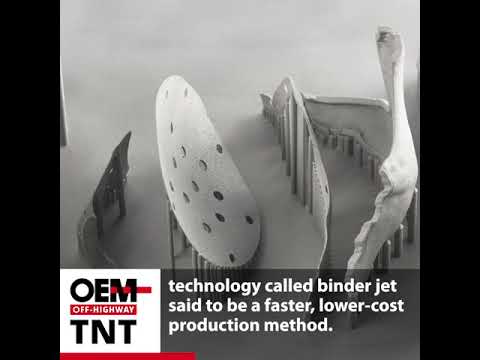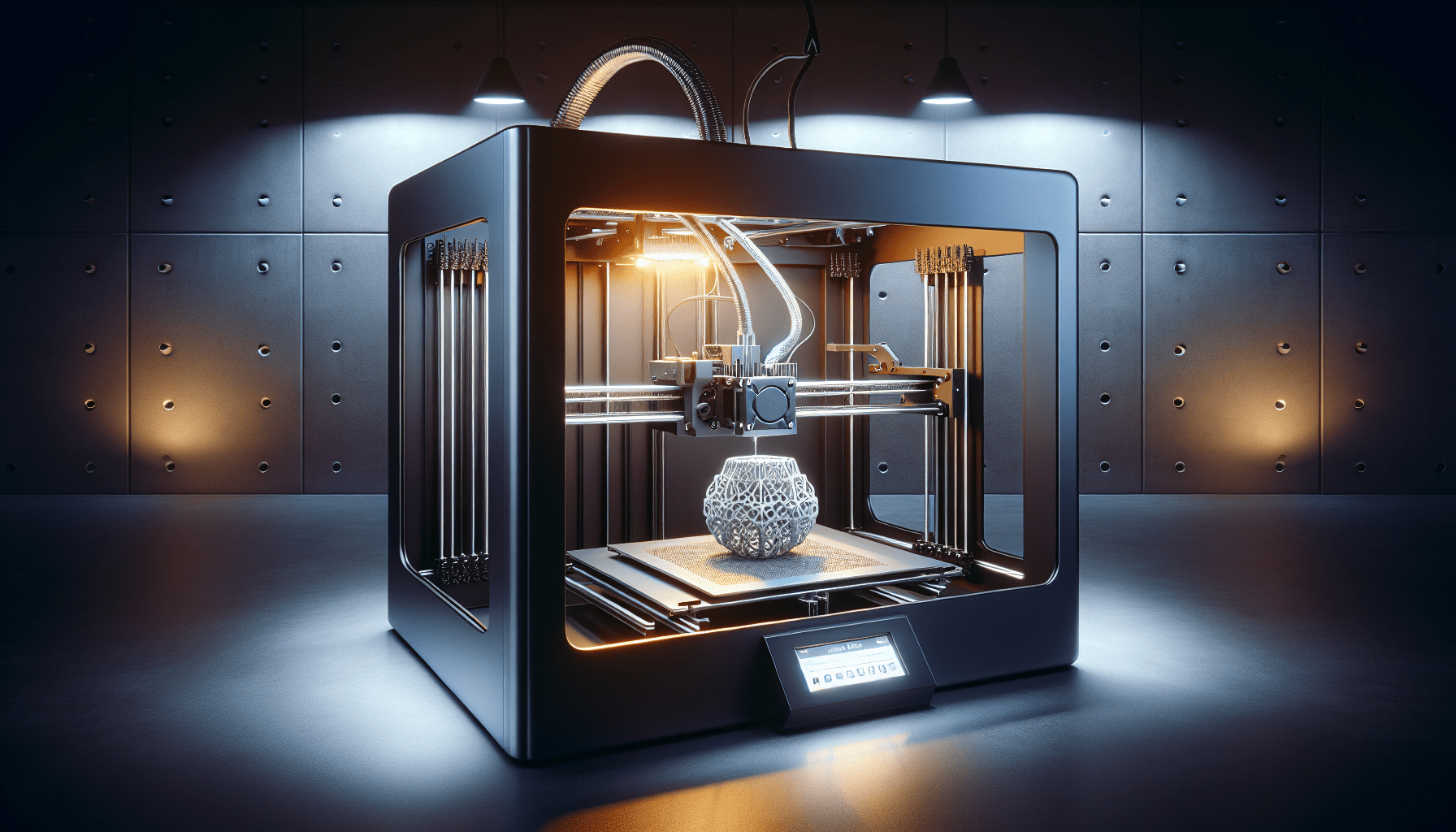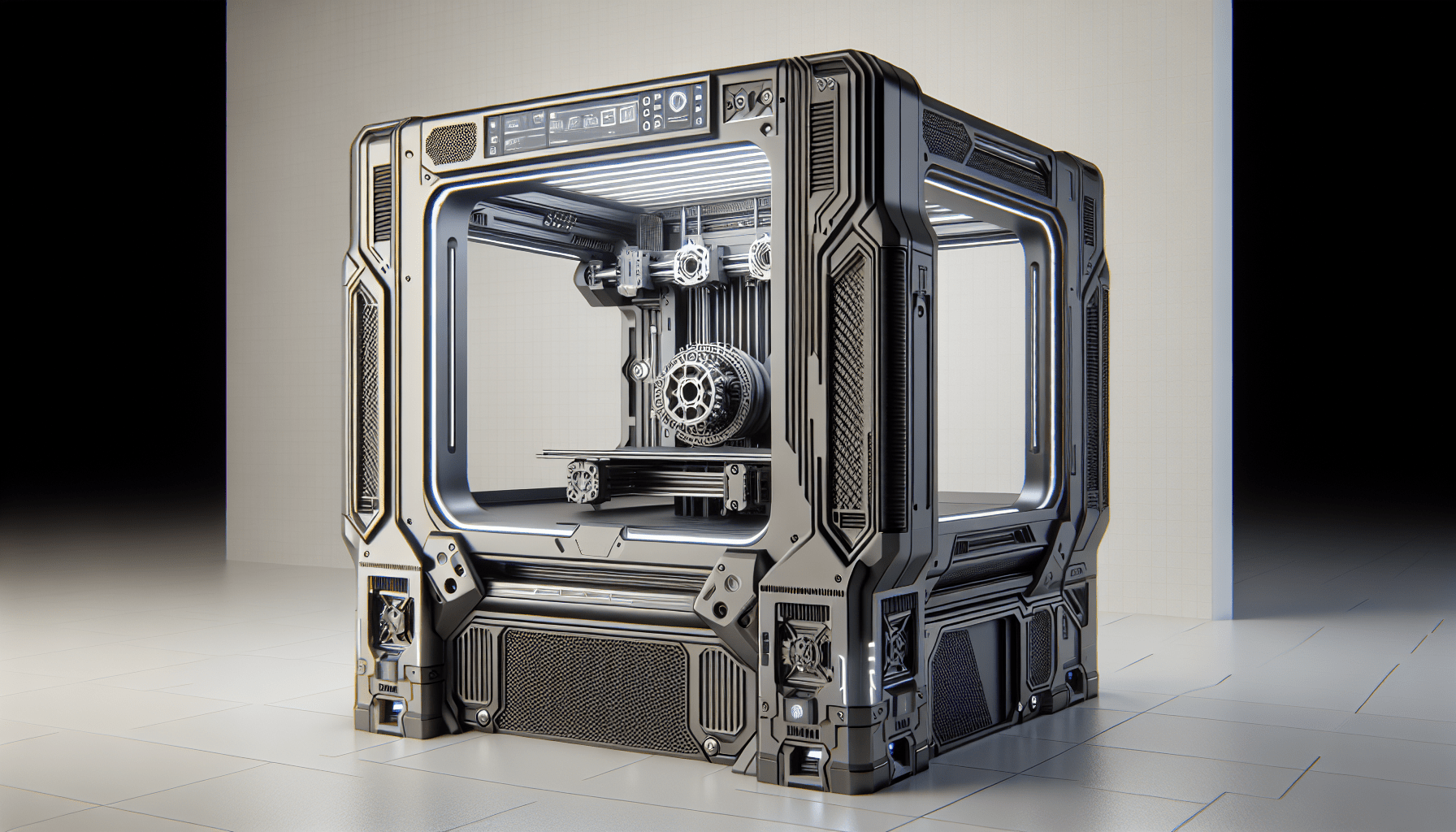Creality K1C 3D Printer, 2024 New Version 3D Printers with 600mm/s Fast Printing Speed, Support Carbon Fiber Filament 300℃ High-Temp Print, Auto Leveling and Clog-Free Direct Extruder
$559.00 (as of June 19, 2025 23:45 GMT +00:00 - More infoProduct prices and availability are accurate as of the date/time indicated and are subject to change. Any price and availability information displayed on [relevant Amazon Site(s), as applicable] at the time of purchase will apply to the purchase of this product.)The 3D printing market is experiencing some exciting advancements, with significant growth predicted in the years ahead. According to a recent ID tac-x report, the market for 3D printing materials is set to reach $23 billion by 2029, driven by the increasing use of prototyping and the demand for more intricate metal printing solutions.
Notably, companies like Cummins and Lincoln Electric are making major investments in state-of-the-art 3D printing technologies. Cummins is focused on high-precision metal printing with its new binder jet technology, which promises faster and more cost-effective production. Meanwhile, Lincoln Electric is collaborating with Oak Ridge National Laboratory to develop large-scale robotic additive manufacturing, which will enable rapid production of metal components over 100 pounds per hour.

$30 off $400+ Anycubic Products with code AC30OFF
Market Overview
Current Market Size
The 3D printing market has seen remarkable growth over the past few years, solidifying its position as a transformative technology in various sectors. As of the latest reports, the 3D printing materials market is valued at approximately $14 billion. This robust figure highlights the increasing acceptance and adoption of 3D printing technologies across multiple industries.
Projected Growth
Looking ahead, the market is expected to expand even further. By 2029, projections suggest that the 3D printing materials market will reach an impressive valuation of $23 billion. This surge is primarily driven by the growing use of 3D printing for prototyping and the expansion into metal printing, which alone is anticipated to be worth $19 billion by 2029. This projected growth underscores the market’s potential and the increasing reliance on 3D printing technologies.
Key Market Drivers
Several key factors are propelling the 3D printing market forward. Innovations in high-precision 3D printing technologies, such as Binder Jet, are making production faster and more cost-effective. Additionally, collaborations like the one between Lincoln Electric and Oak Ridge National Laboratory are pushing the boundaries of what 3D printing can achieve, especially in large-scale additive manufacturing. These advancements are reducing production costs, improving precision, and expanding the range of materials that can be used in 3D printing.
Technological Advancements
High-Precision 3D Printing Technology
High-precision 3D printing technologies are revolutionizing the industry. These advancements are enabling manufacturers to produce more intricate and detailed components at a fraction of the cost and time. Cummins’ recent investment in Binder Jet technology is a prime example. Binder Jet offers a faster and lower-cost production method, making it an attractive option for various industries.
Binder Jet Technology
Binder Jet technology, in particular, is gaining attention for its potential to transform metal printing. This technology uses a liquid binding agent to fuse layers of powder material, allowing for the production of complex metal parts with high precision. It’s not only faster but also more cost-effective compared to traditional methods. This innovation is expected to play a significant role in the future of 3D printing.
Robotic Additive Manufacturing
Robotic additive manufacturing is another area that’s seeing significant advancements. Lincoln Electric’s partnership with Oak Ridge National Laboratory aims to develop large-scale robotic additive manufacturing capabilities. This venture will extend 3D printing to new materials, leverage data analytics, and enable the rapid manufacture of metal components, exceeding 100 pounds per hour. Such progress is anticipated to open up new possibilities in various industries.
Buy Photon Mono M5 Get Free 1KG Resin
Material Innovations
New Materials in 3D Printing
The range of materials used in 3D printing has expanded significantly. Innovations in material science are introducing new options, including advanced polymers, ceramics, and metal alloys. These materials offer improved properties such as higher strength, better durability, and enhanced heat resistance, making them suitable for more demanding applications.
Prototyping Uses
Prototyping remains one of the primary uses of 3D printing. The ability to quickly produce prototypes allows designers and engineers to test and refine their concepts before moving to full-scale production. This not only speeds up the development process but also reduces costs, making it an invaluable tool for innovation.
Metal Printing Expansion
Metal printing is experiencing significant growth, driven by advancements in technologies like Binder Jet. The ability to print complex metal parts with high precision and lower costs is opening new applications in industries such as automotive, aerospace, and healthcare. This expansion is expected to continue, with metal printing projected to be worth $19 billion by 2029.
Industry Applications
Automotive Industry
In the automotive industry, 3D printing is being used for everything from prototyping and tooling to the production of final parts. The ability to produce lightweight and complex components is particularly valuable in improving vehicle performance and fuel efficiency. Manufacturers are also leveraging 3D printing to quickly produce customized parts, reducing lead times and costs.
Healthcare Sector
The healthcare sector is another major beneficiary of 3D printing technology. Customized prosthetics, dental implants, and even bioprinted tissues are now being produced using 3D printing. This technology allows for highly personalized healthcare solutions, improving patient outcomes and reducing costs.
Aerospace Applications
In aerospace, 3D printing is used to produce lightweight, high-strength components that can withstand the rigorous conditions of space travel. The ability to create complex parts with less material waste is particularly valuable in this industry. Companies are using 3D printing to produce everything from engine components to interior cabin parts.

Major Investments
Cummins Investment in Binder Jet
Cummins has made a significant investment in a high-precision 3D metal printing technology known as Binder Jet. This technology promises faster and lower-cost production, which could revolutionize the manufacturing process for metal components. Cummins’ investment underscores the growing importance of 3D printing technologies in industrial manufacturing.
Lincoln Electric’s Partnership with Oak Ridge National Laboratory
Lincoln Electric has partnered with Oak Ridge National Laboratory to develop large-scale robotic additive manufacturing capabilities. This collaboration aims to extend the use of 3D printing to new materials, leverage data analytics, and enable the rapid manufacture of metal components. This partnership highlights the potential of collaborative ventures in pushing the boundaries of 3D printing technology.
Market Leaders
Key Companies in the Market
Several key companies are leading the charge in the 3D printing market. Firms like Stratasys, 3D Systems, and EOS are well-established leaders, providing a range of 3D printing solutions across various industries. These companies are known for their innovative technologies and comprehensive service offerings.
Innovative Startups
In addition to established companies, numerous startups are making waves in the 3D printing market. Firms like Desktop Metal and Markforged are introducing new technologies and materials that are expanding the capabilities of 3D printing. These startups are often more agile and able to bring innovative solutions to the market quickly.
Collaborative Ventures
Collaborative ventures are also playing a crucial role in the growth of the 3D printing market. Partnerships between companies, research institutions, and government agencies are driving innovation and expanding the scope of what 3D printing can achieve. These collaborations are essential for overcoming technical challenges and accelerating the adoption of new technologies.

Challenges and Barriers
Cost Concerns
One of the biggest challenges facing the 3D printing market is cost. While 3D printing can reduce production time and material waste, the initial investment in equipment and materials can be high. This can be a barrier for smaller companies looking to adopt the technology.
Technical Limitations
Despite significant advancements, 3D printing still has some technical limitations. Issues such as print speed, material properties, and part size can restrict its use in certain applications. Ongoing research and development efforts are aimed at addressing these limitations, but they remain a challenge for the industry.
Market Competition
The 3D printing market is highly competitive, with numerous companies vying for a share of the market. This competition drives innovation but can also create challenges for companies trying to differentiate themselves. Staying ahead in terms of technology and service offerings is crucial for success in this competitive landscape.
Regulatory Environment
Current Regulations
The regulatory environment for 3D printing is still evolving. Currently, regulations vary widely depending on the application. For example, medical devices produced using 3D printing must meet stringent FDA requirements, while automotive parts may be subject to different standards. Understanding and navigating these regulations is essential for companies in the 3D printing market.
Future Regulatory Developments
As 3D printing continues to grow, new regulations are likely to emerge. Future regulatory developments will likely focus on ensuring the safety and reliability of 3D-printed products, as well as addressing concerns related to intellectual property and data security. Companies will need to stay abreast of these developments to remain compliant and competitive.
Impact on Market Growth
Regulations can have a significant impact on the growth of the 3D printing market. While stringent regulations can slow down innovation and increase costs, clear and well-defined regulations can provide a framework that fosters growth and innovation. Balancing regulatory requirements with the need for innovation will be key to the market’s future success.
Future Trends
Emerging Technologies
Emerging technologies are expected to shape the future of 3D printing significantly. Advances in areas such as multi-material printing, bioprinting, and nanotechnology are opening up new possibilities. These technologies will enable the production of more complex and functional parts, further expanding the applications of 3D printing.
Predicted Market Shifts
The market is expected to shift towards more specialized and high-value applications. While prototyping and small-scale production will remain important, there will be a growing focus on end-use parts and large-scale manufacturing. Industries such as healthcare, aerospace, and automotive are likely to see the most significant growth.
Long-term Market Outlook
In the long term, the 3D printing market is expected to continue its upward trajectory. Ongoing advancements in technology, materials, and applications will drive growth, while investments and collaborations will further accelerate innovation. The potential for 3D printing to transform manufacturing processes and create new opportunities is immense.
Conclusion
Summary of Key Points
The 3D printing market is experiencing remarkable growth, driven by technological advancements, material innovations, and expanding industry applications. Key investments and collaborative ventures are pushing the boundaries of what 3D printing can achieve, while emerging technologies and predicted market shifts point to a bright future.
Future Potential
The future potential of 3D printing is vast. With ongoing advancements in high-precision technologies, new materials, and large-scale manufacturing capabilities, the market is poised for continued growth. The ability to produce complex and customized parts quickly and cost-effectively makes 3D printing an invaluable tool for innovation across various industries.
Final Thoughts
As the 3D printing market continues its growth trajectory, companies and industries that embrace this technology stand to gain significant advantages. Staying informed about the latest developments, understanding the regulatory landscape, and investing in innovation will be key to success in this dynamic and rapidly evolving market. The future of 3D printing is not just promising; it’s transformative.
$30 off $400+ Anycubic Products with code AC30OFF








